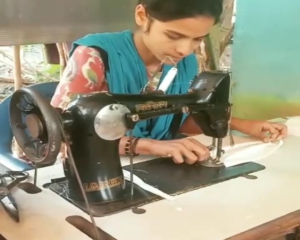SFURTI
Clusters: Resilient, Self-Sustainable
and Inclusive Growth Models
Enterprise
cluster models are resilient and inclusive models, creating livelihoods and
jobs and stimulating high rates of growth. The internationally renowned
clusters such as Silicon Valley in California, IT cluster in Bengaluru in
India, Australian and Chilean wine clusters are testimony to the fact that
clusters can develop into competitive enterprise ecosystems. In India,
innovative clusters are showing evidence of small and medium enterprises
realising economies of scale.
In a cluster-based model at the rural level, the entrepreneurs and artisans share a similar social & cultural background, practice reciprocity and self –help which work as favourable growth factors. A cluster with INR 50,000 government grant per artisan in three years can provide livelihood opportunities to 500 - 1500 artisans and farmers. However, clusters often stagnate and there is need to breakthrough the existing vicious circle of top-down practice to unleash their growth potential.
This article is based on Development Alternative
Group’s experiences under the MSME
 supported
SFURTI (Scheme of Fund for Regeneration of Traditional Industries) project.
It provides insights into factors that are necessary for clusters to realise
their potential and enterprises to thrive in such a model. In our opinion,
the prevalent models of cluster development do not take into account
critical, overlapping factors that drive success – market drive,
technological innovations, adequate infrastructure, skills and collaboration
to achieve scale.
supported
SFURTI (Scheme of Fund for Regeneration of Traditional Industries) project.
It provides insights into factors that are necessary for clusters to realise
their potential and enterprises to thrive in such a model. In our opinion,
the prevalent models of cluster development do not take into account
critical, overlapping factors that drive success – market drive,
technological innovations, adequate infrastructure, skills and collaboration
to achieve scale.
Indian Micro Enterprises Development Foundation (IMEDF) is the social enterprise development vehicle of the Development Alternatives Group which promotes and supports enterprise models through collaborations with institutions to create an ecosystem promoting cluster development. IMEDF acts as the Nodal Agency of the Ministry of MSME, Government of India for development of clusters under the Scheme of Fund for Regeneration of Traditional Industries (SFURTI). At present, IMEDF is developing 16 clusters across 11 states in India with 24 partners supporting 12000 plus artisans and farmers. The clusters are being raised in rural and tribal areas and there are 6,000 women artisans and farmers associated with the IMEDF clusters.
Through these clusters, we find inspiring examples of unique enterprise models that are resilient and market driven (Barauliya and Churachandpur), innovative in process, product or technology (Manglagiri, Mohanpur Millet), and address concerns of the triple bottom line while working with women (Desi Trust Karnataka, Gumla).
One significant example is of the Natural Dye cluster in Shivmogga, Karnataka with a triple bottom line impact with its circular economy model and socially innovative practices. This cluster is located in Heggodu village with a population of 1869 with 380 households and female literacy of around 68.86%. The cluster uses only natural dyes, deploys solar power, water recycling and management, with the local women as stakeholders. These rural women practice social innovation tapping into their community strengths and are building the reputation and brand value of their work. During the pandemic, they made masks. Facebook was used to advertise this initiative, bringing them orders. The women executed the orders from home on their sewing machines with cloth supplied by the cluster. The cluster delivered orders through tie ups with government courier delivery services. This meant employment for approximately 80-100 women artisans making 30-40 masks per day that brought monthly income of INR 4000-5000 to the family.
The above example and many others in our work explains the need to invigorate cluster development with new energy primarily through social innovation and collective action. IMEDF has built strong partnerships with 24 CSOs and value chains. The asset and resource lite models of such cluster development can provide new perspectives to the asset-heavy models and investments followed by corporate giants. This would be a much worthy investment of their resources with broad-based socio-economic and environmental impact. ■
Raman Thapar
rthapar@devalt.org